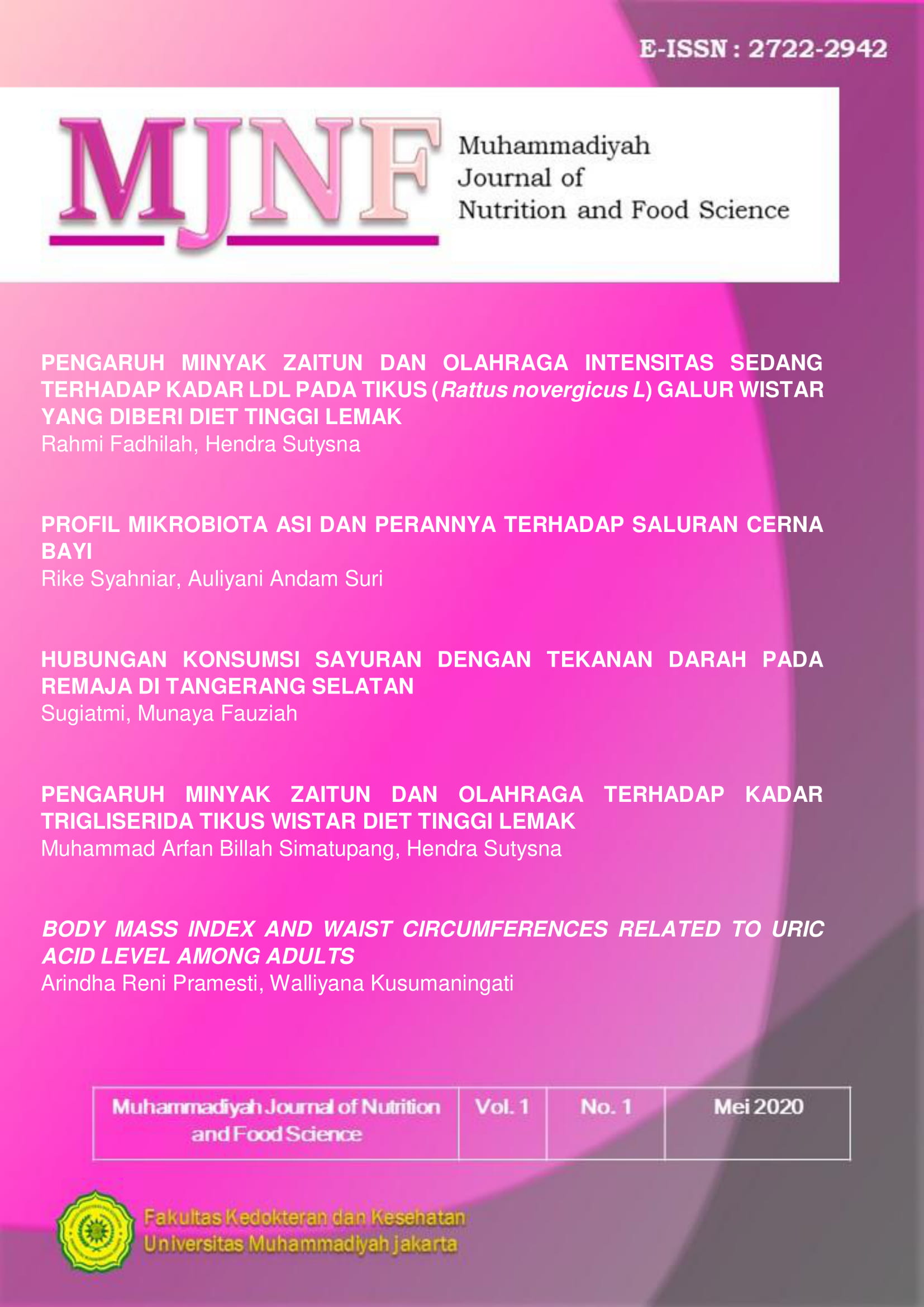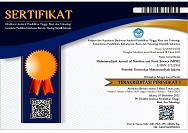Body Mass Index and Waist Circumferences Related to Uric Acid Level among Adults
DOI:
https://doi.org/10.24853/mjnf.1.1.31-34Keywords:
Uric Acid Level, Body Mass Index, Waist CircumferenceAbstract
Background: the changes in metabolism in the body can trigger the increase of uric acid levels which can lead to a precursor of hyperuricemia and gout disease that can result extreme pain in the joint. Based on the study, it has known that uric acid levels can be caused by obesity, protein intake, lifestyle, and others. The anthropometric method which usually used to measured obesity are body mass index (BMI) and waist circumference (WC). Currently, the most commonly used ratio in this way is the Body Mass Index (BMI). Result: in a Canadian study among 151 adults, it was reported that there was a higher correlation between the area of abdominal visceral fat and WC compared with the correlation with the waist-hip circumference ratio. WC is also more strongly associated with total body fat, measured by densitometry, than by waist-to-hip circumference ratio. High levels of leptin in obese people can cause uric acid disruption through urine, so that uric acid levels in the blood of obese people become high. BMI also shows a positive relationship with leptin concentration, which is a trigger factor to increased uric acid levels. American adults also shown that uricemia related to their BMI value. Conclusion: BMI is one of the indicators of obesity, while obesity often thought to influence the incidence of gout by increasing uric acid levels in the blood. WC also closely related potentially to atherogenic metabolic disorders associated with abdominal obesity that to waist-to-hip circumference ratios.References
Newcombe DS. Uric Acid Metabolism in Humans. In: Gout: Basic Science and Clinical Practice. London: Springer-Verlag;
Manfredi JP, Holmes EW. Purine salvage pathways in myocardium. Annu Rev Physiol. Annual Reviews 4139 El Camino Way, PO Box 10139, Palo Alto, CA 94303-0139, USA; 1985;47(1):691–705.
Dianati NA. Gout and hyperuricemia. J Major. 2015;4(3):82–9.
Astuti STW, Tjahjono HD. Faktor-Faktor Yang Memengaruhi Kadar Asam Urat (Gout) pada Laki-Laki Dewasa di Rt 04 Rw 03 Simomulyo Baru Surabaya. Keperawatan. 2018;3(2).
Gibson RS. Principles of Nutritional Assessment. Oxford University Press; 2005.
Kementerian Kesehatan Republik Indonesia. Pedoman Gizi Seimbang. 2014 p. 1–99.
World Health Organisation (WHO). WHO | Waist Circumference and Waist–Hip Ratio. Report of a WHO Expert Consultation. Geneva, 8-11 December 2008. 2008;(December):8–11. Available from: http://www.who.int
de Oliveira E, Burini R. High plasma uric acid concentration: Causes and consequences. Diabetol Metab Syndr. 2012 Apr 4;4:12.
de Oliveira RB, Liabeuf S, Okazaki H, Lenglet A, Desjardins L, Lemke H-D, et al. The clinical impact of plasma leptin levels in a cohort of chronic kidney disease patients. Clin Kidney J [Internet]. 2012/01/01. Oxford University Press; 2013 Feb;6(1):63–70. Available from: https://pubmed.ncbi.nlm.nih.gov/27818752
Lin W-Y, Lung C-C, Liu T-S, Jian Z-H, Ko P-C, Huang J-Y, et al. The association of anthropometry indices with gout in Taiwanese men. BMC Endocr Disord [Internet]. 2013;13(1):30. Available from: https://doi.org/10.1186/1472-6823-13-30
Downloads
Published
Issue
Section
License
(c) 2020 MJNF







